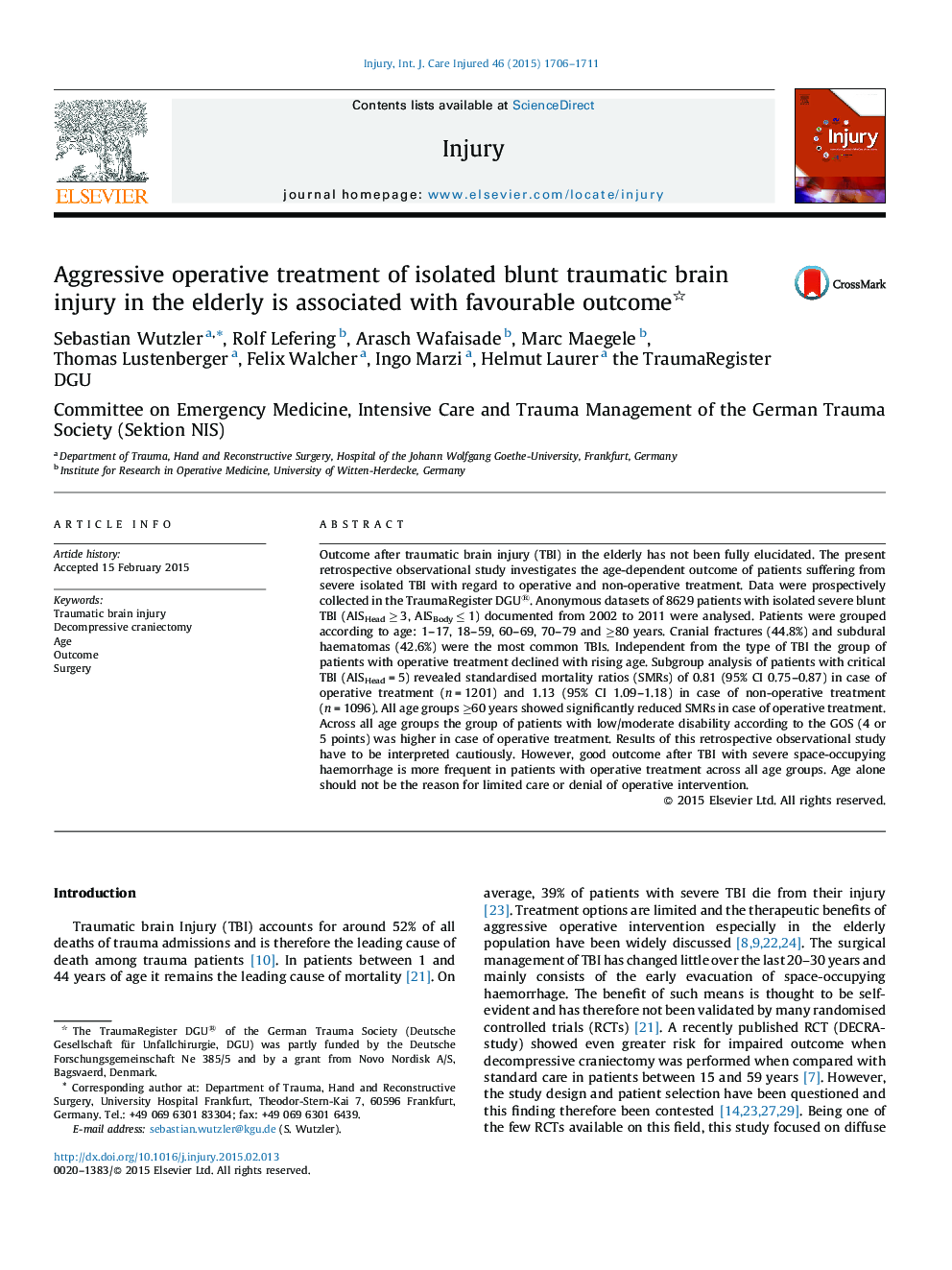| Article ID | Journal | Published Year | Pages | File Type |
|---|---|---|---|---|
| 3239110 | Injury | 2015 | 6 Pages |
Outcome after traumatic brain injury (TBI) in the elderly has not been fully elucidated. The present retrospective observational study investigates the age-dependent outcome of patients suffering from severe isolated TBI with regard to operative and non-operative treatment. Data were prospectively collected in the TraumaRegister DGU®. Anonymous datasets of 8629 patients with isolated severe blunt TBI (AISHead ≥ 3, AISBody ≤ 1) documented from 2002 to 2011 were analysed. Patients were grouped according to age: 1–17, 18–59, 60–69, 70–79 and ≥80 years. Cranial fractures (44.8%) and subdural haematomas (42.6%) were the most common TBIs. Independent from the type of TBI the group of patients with operative treatment declined with rising age. Subgroup analysis of patients with critical TBI (AISHead = 5) revealed standardised mortality ratios (SMRs) of 0.81 (95% CI 0.75–0.87) in case of operative treatment (n = 1201) and 1.13 (95% CI 1.09–1.18) in case of non-operative treatment (n = 1096). All age groups ≥60 years showed significantly reduced SMRs in case of operative treatment. Across all age groups the group of patients with low/moderate disability according to the GOS (4 or 5 points) was higher in case of operative treatment. Results of this retrospective observational study have to be interpreted cautiously. However, good outcome after TBI with severe space-occupying haemorrhage is more frequent in patients with operative treatment across all age groups. Age alone should not be the reason for limited care or denial of operative intervention.
